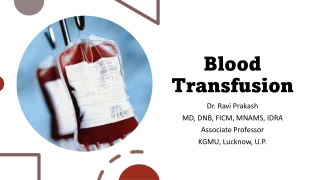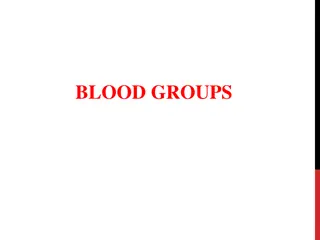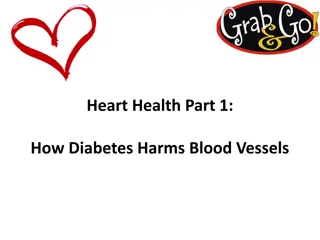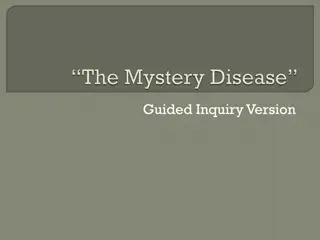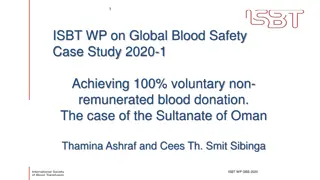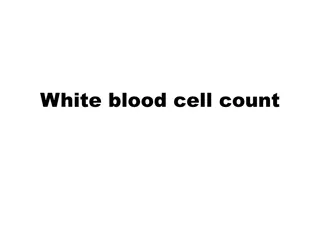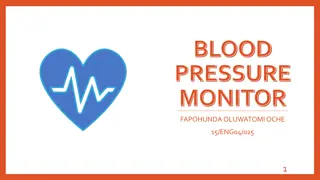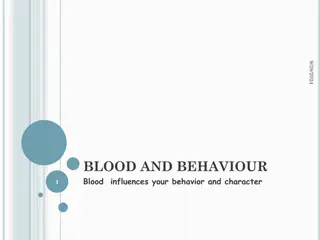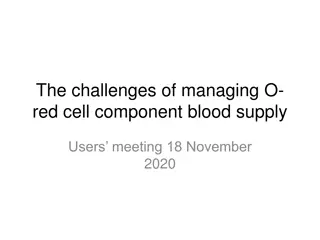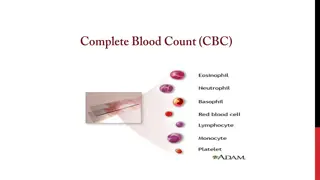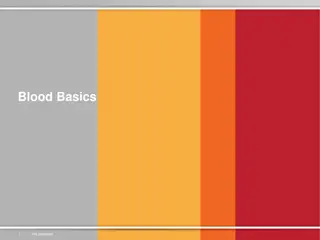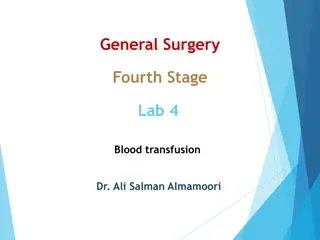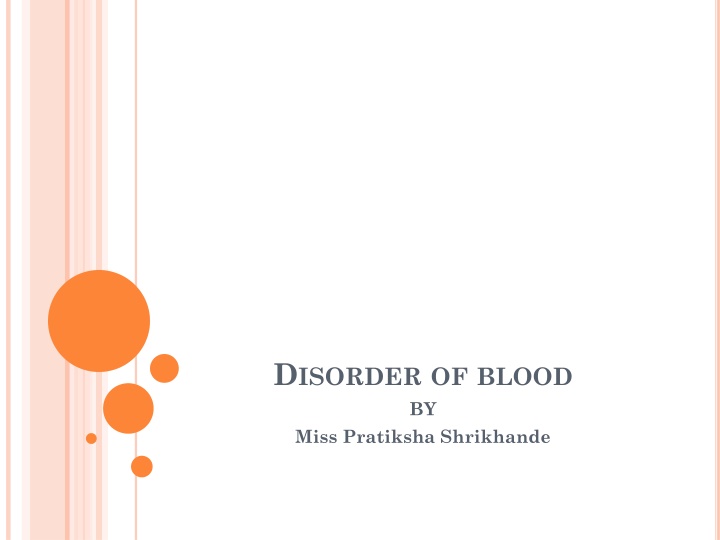
Anemia: Causes, Symptoms, and Prevention
Learn about anemia, a common blood disorder that affects the oxygen-carrying capacity of blood. Explore its causes, symptoms, risk factors, complications, and prevention strategies to maintain good health and well-being.
Download Presentation

Please find below an Image/Link to download the presentation.
The content on the website is provided AS IS for your information and personal use only. It may not be sold, licensed, or shared on other websites without obtaining consent from the author. If you encounter any issues during the download, it is possible that the publisher has removed the file from their server.
You are allowed to download the files provided on this website for personal or commercial use, subject to the condition that they are used lawfully. All files are the property of their respective owners.
The content on the website is provided AS IS for your information and personal use only. It may not be sold, licensed, or shared on other websites without obtaining consent from the author.
E N D
Presentation Transcript
DISORDER OF BLOOD BY Miss Pratiksha Shrikhande
DISORDER OF RBC The disorder of rbc occure in the form of either anemia or polycythemia. ANEMIA : It is the disease involving deficiency in number of cell or deficiency of haemoglobin . Because of any one deficiencies, there is a decrease in the oxygen carrying capacity of blood. Symptoms: Breathlessness Tiredness Loss of appetite Pallor of skin Dizziness
RISK FACTORS A diet lacking in certain vitamins. Having a diet that is consistently low in iron, vitamin B-12 and folate increases your risk of anemia. Intestinal disorders. Having an intestinal disorder that affects the absorption of nutrients in your small intestine such as Crohn's disease puts you at risk of anemia. Menstruation. In general, women who haven't experienced menopause have a greater risk of iron deficiency anemia than do men and postmenopausal women. That's because menstruation causes the loss of red blood cells. Pregnancy. If you're pregnant and aren't taking a multivitamin with folic acid, you're at an increased risk of anemia.
Chronic conditions. If you have cancer, kidney failure or another chronic condition, you may be at risk of anemia of chronic disease. These conditions can lead to a shortage of red blood cells. Slow, chronic blood loss from an ulcer or other source within your body can deplete your body's store of iron, leading to iron deficiency anemia. Family history. If your family has a history of an inherited anemia, such as sickle cell anemia, you also may be at increased risk of the condition. Other factors. A history of certain infections, blood diseases and autoimmune disorders, alcoholism, exposure to toxic chemicals, and the use of some medications can affect red blood cell production and lead to anemia. Age. People over age 65 are at increased risk of anemia.
COMPLICATIONS Severe fatigue. When anemia is severe enough, you may be so tired that you can't complete everyday tasks. Pregnancy complications. Pregnant women with folate deficiency anemia may be more likely to experience complications, such as premature birth. Heart problems. Anemia can lead to a rapid or irregular heartbeat (arrhythmia). When you're anemic your heart must pump more blood to compensate for the lack of oxygen in the blood. This can lead to an enlarged heart or heart failure. Death. Some inherited anemias, such as sickle cell anemia, can be serious and lead to life-threatening complications. Losing a lot of blood quickly results in acute, severe anemia and can be fatal.
PREVENTION Eat a vitamin-rich diet Many types of anemia can't be prevented. But iron deficiency anemia and vitamin deficiency anemias can be avoided by having a diet that includes a variety of vitamins and nutrients, including: Iron. Iron-rich foods include beef and other meats, beans, lentils, iron-fortified cereals, dark green leafy vegetables, and dried fruit. Folate. This nutrient, and its synthetic form folic acid, can be found in fruits and fruit juices, dark green leafy vegetables, green peas, kidney beans, peanuts, and enriched grain products, such as bread, cereal, pasta and rice. Vitamin B-12. Foods rich in vitamin B-12 include meat, dairy products, and fortified cereal and soya products. Vitamin C. Foods rich in vitamin C include citrus fruits and juices, peppers, broccoli, tomatoes, melons and strawberries. These items help increase iron absorption.
Prevent malaria Anemia can be a complication of malaria. In areas where malaria is common, prevention involves reducing exposure to mosquitoes, for example, by using bed nets treated with insecticide.
TYPES Iron deficiency anemia Megaloblastic anemia Hemolytic anemia Aplastic anemia
CAUSES OF IRON DEFICIENCY ANEMIA Inadequate iron intake Pregnancy or blood loss due to menstruation Internal bleeding Inability to absorb iron: Certain disorders or surgeries that affect the intestines can also interfere with how your body absorbs iron
IRON DEFICIENCY ANEMIA In this type of anemia there is a deficiency of iron Due to 1) low dietary intake 2) decreased absorption Due to lack of iron , sufficient haemoglobin is not synthesized. So defects in this type of anemia is , inadequate haemoglobin synthesis. symptoms general fatigue weakness pale skin shortness of breath dizziness tongue swelling or soreness cold hands and feet fast or irregular heartbeat brittle nails headaches
MEGALOBLASTIC ANEMIA This type of anemia occurs due to the deficiency of either vit B12 or folic acid. vit B12 or folic acid are necessary for the maturation of red blood cells. In the deficiency if either of them, the maturation of red blood cells does not occur. So large sized red blood cells called megaloblast are released in circulation.
HAEMOLYTIC ANEMIA It occurs due to increase destruction of rbcs . This group of anemias developes when red blood cells are destroyed faster than the bone marrow can replace them It occurs due to the 1) hereditary disorder 2) mechanical injury to rbc 3) infection like maleria
APLASTIC ANEMIA It occurs due to the suppression of bone marrow function. This is life threatening anemia occurs when your body doesn t produce enough RBCs. It can be caused by drugs, chemical, irradiation or malignant diseases, auto immune disease.
POLYCYTHEMIA In this condition, here is an abnormal increase in the no. of rbc. This increases the viscosity of blood. This decreases the rate of flow & increase the risk of intravascular clotting. Common causes of polycythemia include: Bone marrow cancer 1) A response to reduced availability of oxygen as at high altitudes 2)
DISORDER OF WBC Leucocytosis: It is an increase in the total number of white blood cells beyond 10000 per cubic millimeter . It may of following type: Neutrophilla : Increase in the no. of neutrophills. It occurs in many inflammatory condition. Eosinophilia : Increase in the no. of eosinophills It is an indication for allergic manifestations. Leukemia : It is cancerous condition characherised by an overproduction of wbc. Leukemia can occur at any age but it is more common in childhood.
LEUCOPENIA It is decrease in the number of white blood cells. It is produced by infections & some drugs. Depending on the type of WBC which is reduced, it may be called as neutropenia, lymphopenia, eosinopenia.
DISORDER OF PLATELETS They occurs in the form of thrombocytopenia. It is the condition where there is a decrease in platelate count due to deficiency of clotting factors. It results in : Increase in bleeding time Defects in the retraction of clot
DISORDER OF CLOTTING Haemophilia: This disease is caused due to the absence of factor VIII (Antihaemophilic factor ). This disease occurs in men. But it is genetically transmitted through women. Hereditary bleeding disorders due to deficiency of clotting factors Thrombosis : Intravascular clotting of blood is called thrombosis. Thrombosis may occus due to roughning or thickening of blood vessels. (artherosclerosis) Thrombosis can obstruct essential blood vessel ( like coronary or cerebral vessels ) this may lead to death.

